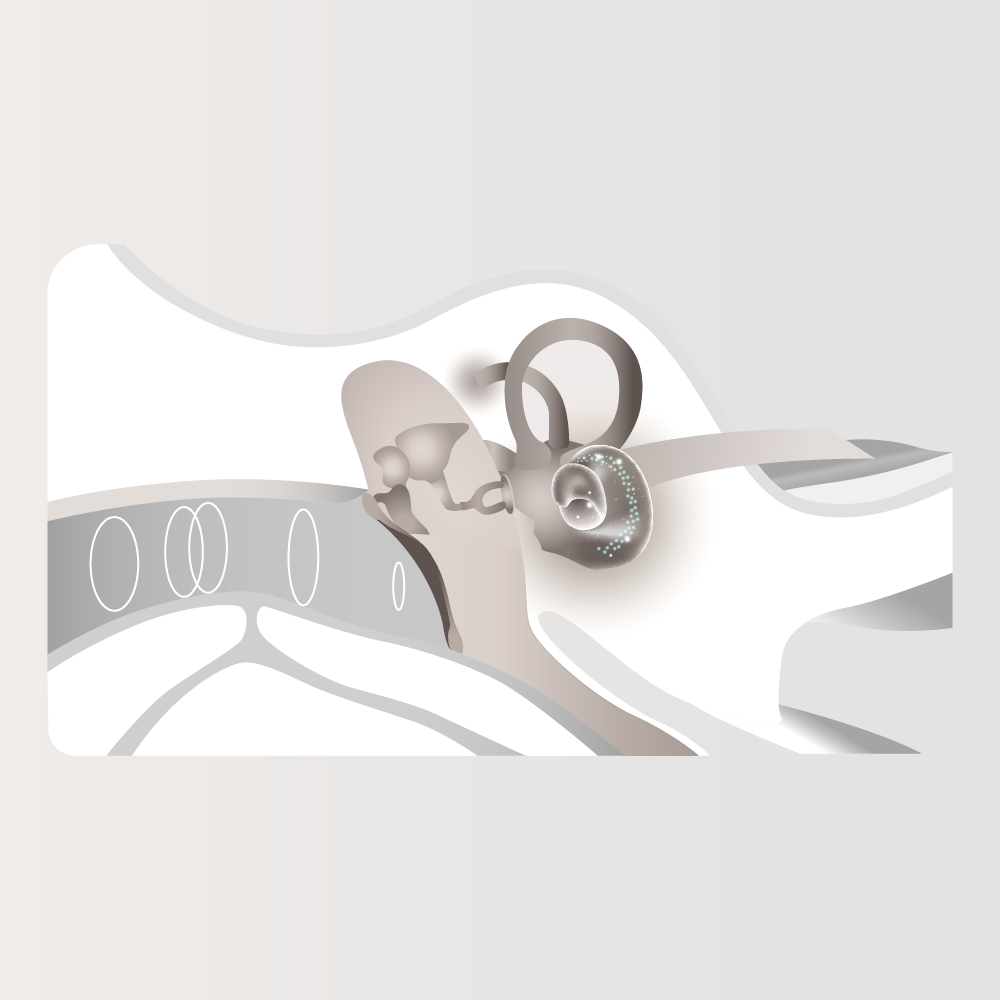Hearing and Hearing Loss
The sense of hearing is taken for granted by many of us – enjoying the birds´ chirping, favorite music or baby laughter are sounds that we love, without thinking much about what´s behind it. However, hearing involves incredible processes that enable the signal journey to our brain!

Hearing connects us with things we love!
Our ears are constantly active, even when we are sleeping! They are a small anatomical miracle and consist of the outer, the middle and the inner ear, and the auditory nerve that transmits the signals to the brain. Find out more on the mechanisms of signal journey through the ears!
Type of Hearing Loss
Sensorineural Hearing Loss
Sensorineural hearing loss means that the cochlear hair cells are damaged or missing. The hair cells are responsible for converting the acoustic signals into electrical signals that our brain needs to understand the sound properly. The damage to the hair cells can be caused by loud noise, genetics, head trauma, aging or various other factors in the environment.
Type of Hearing Loss
Conductive Hearing Loss
This type of hearing loss is diagnosed when a problem in the outer or middle ear prevents the sound from being transmitted to the inner ear. Conductive hearing loss can be caused by infection, eardrum rupture, malformation of the ear, etc. If the problem is temporary, it can be treated with medication or surgery. When medication or surgery cannot solve the problem, there are hearing solutions that can!
Type of Hearing Loss
Mixed Hearing Loss
This type of hearing loss describes the combination of conductive and sensorineural hearing loss, which means that there is a combination of problems in the inner and in the middle or outer ear. Mixed hearing loss can be caused by various factors, such as cholesteatoma, other tumors, trauma, etc.
RECOGNIZE THE EARLY SIGNS
The signs of hearing loss
It is important to recognize the early signs of hearing loss and to react properly, as hearing usually does not tolerate delay. Every moment of life is worth hearing!


